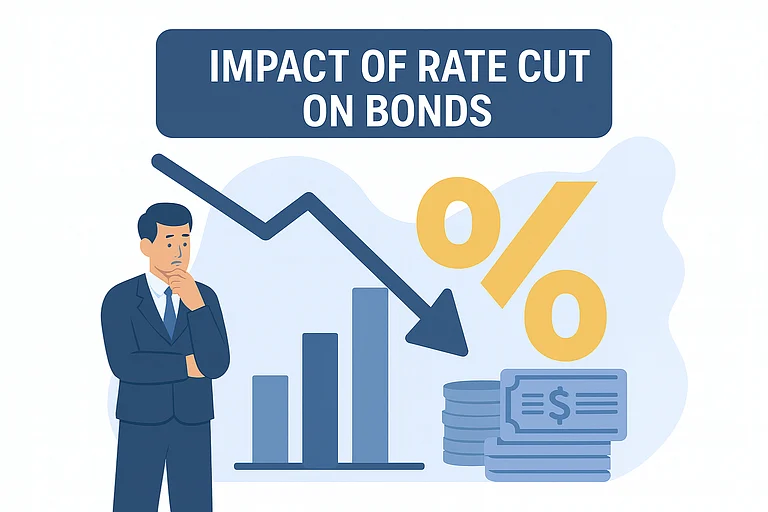
Summary of this article
The 10-year benchmark yield gained over 107 basis points after RBI MPC kept the repo rate unchanged.
Abhishek Bisen, Head-Fixed Income, Kotak Mahindra AMC says the bar for future rate cuts is high.
Bisen added that he sees further upside for G-sec bond yields.
Indian Bond yields opened flat on August 6, ahead of the announcement of Reserve Bank of India’s Monetary Policy Committee’s decision. However, after the Reserve Bank of India (RBI) governor Sanjay Malhotra announced that the Monetary Policy Committee (MPC) will keep the repo rate unchanged at 5.5 per cent in the August monetary policy review, the 10-year benchmark yield gained over 107 basis points and increased to 6.39 per cent.
Abhishek Bisen, Head-Fixed Income, Kotak Mahindra Asset Management Company told Outlook Money that the RBI’s commentary was neutral to hawkish. He added that the bar for a future rate cut is high unless there’s a slowdown in growth.
“The commentary was neutral to hawkish with GDP growth maintained at 6.50 per cent for FY26 and inflation projection of 4.40 per cent for Q4FY26 and 4.90 per cent for Q1FY27. With this commentary and inflation forecast, the bar of any future rate cut is high, unless growth slows down meaningfully due to factors such as tariff-related uncertainty,” Bisen said.
Bisen added that he sees further upside for G-sec bond yields. He added that the 10-year benchmark is likely to trade between the 6.3 per cent and 6.45 per cent range.
“G-sec yields have hardened by 4 to 5 basis points, and in the near term, the 10-year benchmark is expected to trade within the 6.30 per cent to 6.45 per cent range,” Bisen said.
The yield for the 10-year benchmark has declined by 570 bps year-to-date in 2025. So far in 2025, the RBI has slashed the repo rate by 100 basis points (bps) to facilitate growth. However, the rate cuts were announced in a staggered manner, with 25 bps announced in February and April, and a 50 bps rate cut announced later.
Typically, repo-rate cuts reduce interest rates in the economy. This, in turn, makes bonds which have been issued with the higher fixed coupon payments more lucrative for investors compared to the new bonds that will be issued post the rate-cut with lower yields. Amid the rise in demand for existing bonds their price rises. Once the price rises the yield can reduce as the coupon payment remains the same since the return on investment would now be lower.
Commenting on RBI’s rationale behind keeping the benchmark lending rate unchanged despite a downward revision in inflation projection, Bisen said that the central bank is currently maintaining a ‘wait and watch’ approach, which is in line with market expectations.
“Despite the downward revision in average inflation projections to 3.10 per cent (from 3.70 per cent) for FY26, the RBI opted to maintain a “wait and watch” approach, keeping policy rates unchanged and stance at neutral with unanimous vote by all members— in line with expectations of the majority of market players,” Bisen said.
















